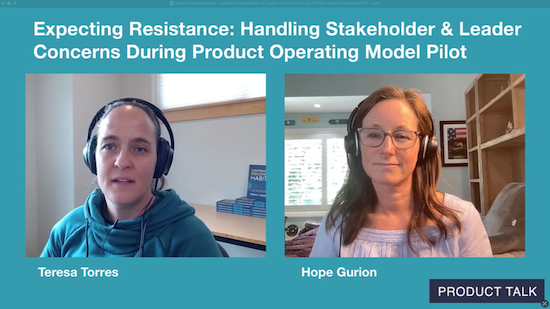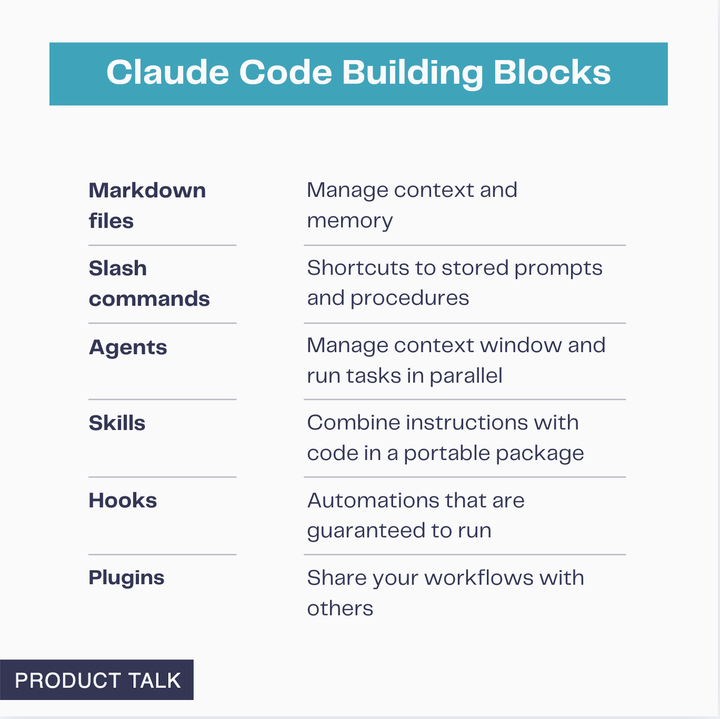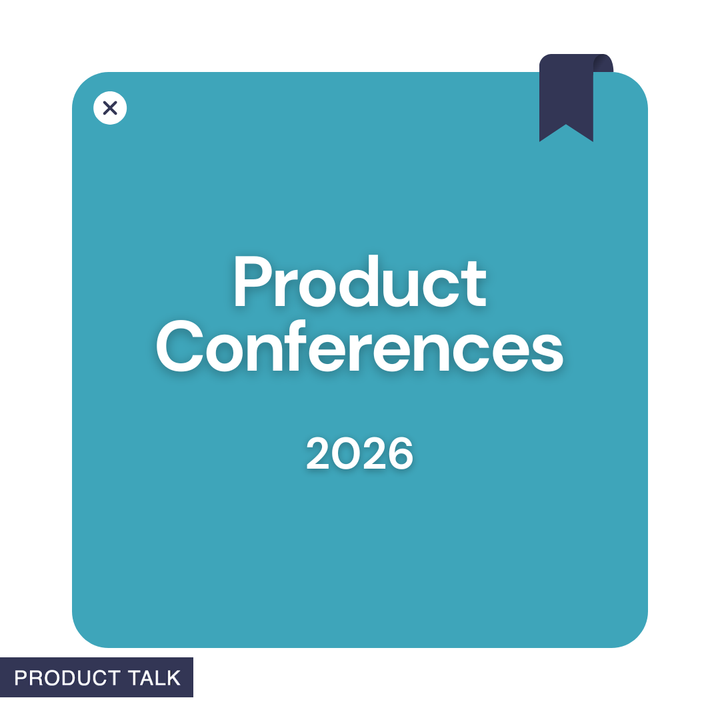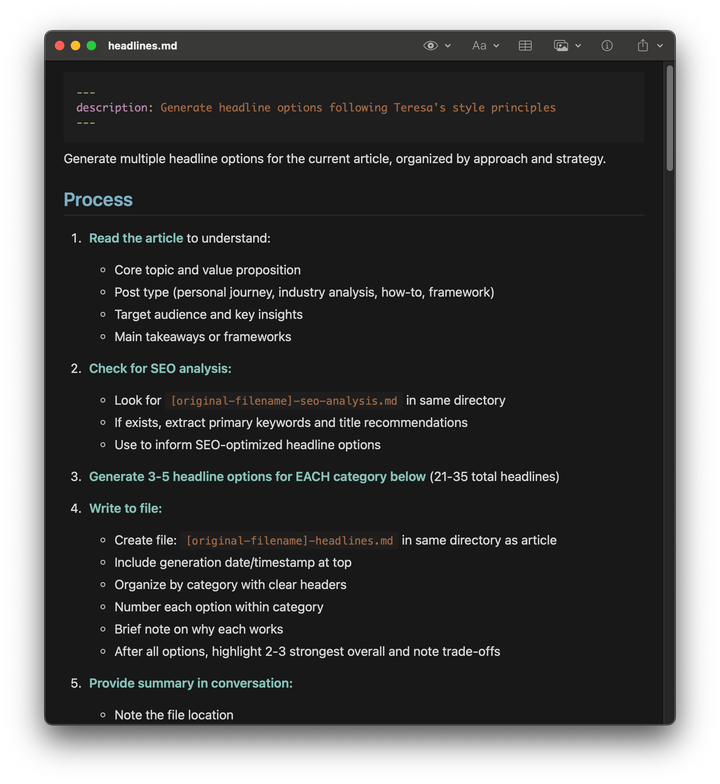Expecting Resistance: Handling Stakeholder & Leader Concerns During Product Operating Model Pilot

Trying to adopt the product operating model? One of the keys to success is remembering that it’s not just about product teams—it’s an organization-wide transformation.
This is why Hope Gurion and I have been doing a series on organizational change. In our years as product coaches, we’ve seen how many companies underestimate what’s actually involved in this type of transformation. And we’re sharing our tips for success so you can avoid some of these common pitfalls.
If you’re just jumping in here, you might want to check out some of the previous posts in this series first.
- In the first article, we covered how to decide if your organization is ready for change.
- Next, we introduced the biggest mistake we see companies make when trying to undergo a transformation.
- After that, we shared advice on how to select your pilot team to trial the change.
- Then, we described how to build the skills pilot teams need to succeed.
- And after that, we discussed how leaders and stakeholders can best support pilot teams.
- In the most recent discussion, we looked at ways that resistance can come up within the pilot team.
And in today’s conversation, we’re looking at how resistance might show up within leaders and stakeholders—even if you were advocating for this change to begin with.
We’ll describe a few common types of resistance and offer some ways you can overcome it.
You can watch the video of our conversation or read a lightly edited transcript below.
The 3 Types of Resistance to Change from Leaders and Stakeholders

Teresa Torres: Welcome, everybody. I'm Teresa Torres, and I'm here with Hope Gurion. We're here to talk about the types of resistance that you might get from leaders and stakeholders as your pilot teams start to put the product operating model into practice.
Let me back up and give a little bit of context. We're in the middle of a series where we've been discussing how companies can successfully adopt the product operating model. We've been sharing everything from how do you know if your organization is ready, how to avoid the biggest mistake we see team companies make, how to choose pilot teams, and how to set those teams up for success.
In the last video, we dove into the types of resistance you might get from your pilot teams as they start to put the product operating model into place. And today, we're going to look at the same topic, but from a leadership and stakeholder standpoint.
Because it's easy to think only our product teams change in the product operating model. But what we see in practice is that it's an entire organizational change. And so we're going to do a deep dive on this.
And just like in the last video, we're going to cover the top three forms of resistance. There are more. These are the most common. And then we'll get into what you can do to help mitigate some of them.
All right, Hope, do you want to kick us off? What's our first big form of resistance from stakeholders and leaders?
1. Leaders and Stakeholders Still Expect Specific Solutions
Hope Gurion: Well, you kind of touched on it. I think one of the things that exposes this is— depending on the amount of socialization that has been done within an organization about what the product operating model means or what it means to be outcome oriented as an organization, it might expose that if certain leaders and stakeholders thought this was just the technology group's new way of working, it immediately sort of confronts them when we have the pilot teams.
And then their first resistance point is when the same leaders and stakeholders are saying, “Where's the solution that I was expecting from you?” So when our stakeholders and leaders are still expecting their specific solution requests, mandates, however it's framed, that immediately starts to challenge the pilot teams who are working towards an outcome agnostic of the solutions that they might develop on the way.
Usually that first point of resistance is: I thought I was still getting my solution idea. You were just doing some stuff differently to get me that solution idea.
Teresa Torres: We talked about this in our video about how to prepare your leaders and stakeholders. One of our recommendations was, when you're choosing pilot teams, you want to make sure their leaders are bought into being outcome focused.
And even if you do that, when you have your pilot team start working, you still might encounter this form of resistance of like, yeah, I get it. I agree with their outcome. They're working on the right thing, but I thought they were going to do it this way.
I often see this as: We're outcome driven and output driven. So you could still do all the steps we recommended in the previous videos, but this is still going to come up because change is hard for everybody.
I might in my head intellectually agree, I want this team to work on this outcome and that all makes sense to me. But somewhere emotionally in my gut, I'm still committed to my favorite solution. And I still believe my favorite solution is the best way to reach that outcome.
Hope Gurion: And it's hard because, even though we have pilot teams, we probably really haven't engaged with our leaders and stakeholders yet to tell them how they need to partner or give input to the product teams in a more helpful way that accelerates progress to the outcome.
And they might believe that they are accelerating progress to the outcome by being so specific about the solution idea that they think the team should be working on.
Teresa Torres: I think also, especially with leaders and stakeholders, these tend to be people more senior in the organizational hierarchy than our product team individual contributors. And so it's really easy to believe: “I have a lot of experience with this. I know more than these teams. Where does that experience get to come into play? And when do I get to use my expertise?”
And so there's a little bit of a learning curve. We want our stakeholders to give their input and to share their experience, but we need to learn new patterns where they're sharing that experience without dictating outputs.
Hope Gurion: Exactly right. There's another reason, I think, that leaders kind of gravitate to what they've always done, which is: Let me tell you what you should be doing. It's often because they want certainty. And they may be in a higher position in the company. They may have more influence over decisions. They may be used to being in a powerful role.
And it's not that their role isn't powerful. It’s just that we’re switching. Your role is no longer to dictate what the teams do. Now it’s to help the teams have that strategic context so that they accelerate making good choices. And so, this tension between leaders who are used to being very directive and clinging to the illusion of certainty that they've had when they dictate solutions to relinquish that, to being much more clear on this is what success looks like.
How do we make sure the teams have the knowledge they need to make good decisions? A lot of times the leaders want that control. I see leaders saying, well, when do I get to approve? Or when do we have a stage gate where I get to approve or sign off before the team goes too far?
And I asked them, “What are you trying to avoid?” And they're like, “I don't want them to go so far down a path that's the wrong path.” That's the fear. And so they feel like they're shortcutting that or circumventing that by being prescriptive about the solution.
And in fact, there's other ways that they can engage that are actually much more empowering to the teams and don't create this bottleneck dependency on the leader to make all the decisions.
2. Leaders and Stakeholders Don’t Want to Give up Control and Need Certainty
Teresa Torres: This is a really good one. Just to clarify, this is our second form of resistance—this idea of not wanting to give up control and needing certainty. And it overlaps quite a bit with this first one: I know you want your outcome, but I still want my output.
And I think this one comes up a lot because there's a trade-off we're making when we move to empowered product teams. The trade-off is we're saying, look, as a manager, you can dictate all of the decisions and you can have complete control over what your product teams do. And you're a smart, capable person and some subset of those decisions are going to be great.
But we know from experience that they're not all going to be great. And you become a bottleneck. Everything goes through you. We move at the pace of you. And it's exhausting. It burns people out.
And I think the trade-off we're making when we move to empowered teams is we're saying, look, you are going to give up some control. It doesn't mean you're giving up all control. And what you're getting back in return is you're not a bottleneck. You actually get to go home at the end of the day. Your teams get to move faster. And because they're equipped to test and iterate, you're going to get to better solutions.
But the challenge is that transition's really hard. There's a leap of faith. The visual that's coming to mind—it's going to sound so silly—but I'm thinking of the third Indiana Jones movie where he's at this cavernous gap and it looks like he has to just step into the void. And as soon as he steps into the void, a walkway appears.
There's a little bit of this leap of faith—we have to relinquish some control to see that we get better results. Some of this is a know-how problem. We have to know how to set the guardrails so that we do get better results. I have a feeling we're going to talk about that when we talk about how we address these. Okay, what's our third one?
3. Leaders and Stakeholders Still Insist Their Teams Run Everything Past Them
Hope Gurion: I think sometimes this gets masked when our leaders or stakeholders, without exposing the problem, try to solve it by saying, “Just check with me,” or “Just make sure I approve it,” or “Don't do anything without checking with me first.” The reason is because there's this strategic context gap.
Often that gets exposed when pilot teams are trying to make decisions and de-risk their solutions in order to make progress on the outcome. When there isn't a clear strategy in place, often the way that this lack of strategic context has been mitigated in an organization is it sits in different leaders' heads.
And so as long as the teams are running everything by those leaders, that mitigates the risk of the teams not having that strategic context. But again, that creates a bottleneck. It's really common in an output-oriented org that all that strategic context sits in leaders' heads.
In an outcome-oriented product org, the strategic context needs to be accessible. We need to have clarity about what our expectations are and any constraints that the teams need to work within in order to make progress on the outcomes in a way that works for the business.
Teresa Torres: Definitely. This is a huge one. I run these monthly product leadership discussions, and I think they're all about missing strategic context. All of them. Someone shares their org context. It's like a mini case study.
And I think 98% of them are: I can't get my CEO to make a choice between this and this from a strategy standpoint. I tried to document my strategy. I can't get everybody aligned around it. I feel like I've communicated my strategy 17 times, but my team still doesn't get it. It's all around strategic context.
Strategic context isn't just strategy. It's vision. It's strategy. It's whatever your current strategic objectives are. A good way to think about it is when somebody says, “Just check with me,” they should pause and think about what's in their head that they’re going to use to evaluate what someone brought to them. How do they externalize that and make sure their teams understand it so they can check with themselves?
Hope Gurion: That's a great way to put it. But it takes a certain level of humility within those leaders, because it can be self-serving for a leader to say, the way I keep my power and importance in this organization is I keep it all in my head.
And that's the conundrum of trying to move towards an outcome-oriented style of product management is we actually need more shared understanding of the strategic context. And that does require some hard choices for leaders, which is why going back to our very first video, you want to make sure the CEO is on board.
How as a Leader You Can Overcome Your Own Resistance to Change
Teresa Torres: I know you have a whole section you want to get into around rituals for what to do when these come up. One of my questions for you is: I am a leader and I don't want to give up control and I want to keep my power in the organization and I want to use my expertise. How do I manage empowered teams? What am I doing to overcome my own resistance to this change?
Hope Gurion: In that scenario, I'm going to presume that that is not a product tech design functional leader, that that might be somebody operating in another part of the company with strategic context.
Now, it could be either. But if you're in the product design tech organization, it would be confusing to me that you would want to be leading empowered teams and also saying, check with me on every decision. That would be confusing.
Teresa Torres: This is like a heart gut thing. Or a brain gut thing. I see this a lot. The leader is thinking, “I am bought in. I'm intellectually bought in. I'm emotionally having a hard time letting go.”
And I think the reason why it happens is because as the leader, I'm being held accountable to my team's outcomes. So I need to know that they're making progress on the outcomes. This is where I think rituals come in. So why don't we get into the rituals?
Hope Gurion: Wherever the resistance is coming from, I personally see it more so from stakeholder partners, GMs, business unit—depending on the organization where they've been prescriptive about solutions, or if they're willing to relinquish the solutions, it's like check with me before you go too far.
So one of the things that we can do is for these pilot teams, we need them to show their work. We talked about this in the last video: How do we have these sort of discovery delivery demos or outcome progress demos? You can call it whatever you want—product reviews.
How do they show the context of what they've learned from customers? How do they show the data they're using to make prioritization decisions? Maybe using those moments to say, is this something that you want to participate in? Do you want to contribute to this? Do you want to help us generate solution ideas? Do you want to help us design assumption tests?
I think inviting people who are likely to have strong opinions or have fear that you might miss strategic context, it's important to use those demos as checkpoints to say, is there anything we've missed? Is there anything that you think we should be considering?
And then trying to expose that or capture that as either strategic context for the team to bring with them as they continue to make decisions or decide that there's certain people who want to play a role in making some of the decisions so that the way the team is working isn't like an us versus them. It's a we. Who's the right “we” to make this decision?
Teresa Torres: I think the other thing that's really important here is that the leaders and the stakeholders almost have to learn a new role. So if teams are showing their work, it's really easy for a leader to be like, I don't like that solution. What if we did it this way instead?
And I think that's really problematic. I give this silly analogy of a team that says, “We should make a red balloon.” And a leader says, “No, we should make a blue balloon.” They're not meaningfully different. It's just a preference being expressed. But this drives our teams nuts because it removes their empowerment. They came up with a perfectly adequate solution and we're still saying no.
And I think instead what leaders need to learn is how to pull that strategic context out of their heads. And instead of saying, “Don't do this. Do this,” saying, “I think there's a constraint you're not aware of. Let me give you information you might not have.”
And then you still give the team the freedom to figure out how to evolve their solution. And if it turns out in this context, a blue balloon is really better, they're going to get there because you've given them the constraints they have to satisfy. And that's a skill leaders have to learn because it takes setting the ego aside a little bit. It's not: I have the right answer. It's: My job is to help you get to a better answer.
Hope Gurion: I think this is also where leaders sometimes, out of a desire to make progress as fast as possible, give the answer or give an answer. Sometimes they may be sharing that answer as another idea, but the teams interpret it as a directive. And this is really like when you're trying to move to new ways of operating, empowered teams working towards outcomes.
If your teams have been in an environment where they're used to being told what to do and they better do it, any sort of suggestion from a leader of, “I think you should do this” without that context is going to cause the teams to fall right back into their old ways of working and draw the conclusion that, “See, it will never work here. Our leaders just want to give us solutions.”
And so you really have to be intentional as a stakeholder/leader to these pilot teams to say, how can we show up differently to give them the information they might be blind to because it's usually been in my head? And how do we make sure that that's something accessible to them? And how do we make sure that they keep that to expedite many good decisions down the road?
Teresa Torres: I think this is a really easy one to underestimate as a leader. I experienced this when I became a startup CEO. I would be walking around the room talking to people as they were spitballing ideas. I would say something that was just an off-the-cuff comment and people took it as Teresa said, “Do this.” And I was like, what? Where did that come from?
I think people forget that your position carries weight that you don't always intend. And so I think it's the leader's responsibility to really clearly communicate: We're brainstorming, I'm just adding an idea to the batch of ideas. Or I'm raising a concern, but I'm not telling you to do this. I just want you to address the concern.
And to be that explicit because when we're not, our teams fill in the gaps and I can't tell you how many times I've heard leaders say, “I didn't mean it that way, they just took it that way.” Or “I've told them 400 times and they just…”
We have to be way more explicit in our communication than we think. Especially if we don't want to trigger those habits of: Just do what I tell you to do.
Hope Gurion: These sort of rituals—product outcome reviews or discovery delivery demos or whatever—when the pilot teams are showing the progress that they've made, especially given the next decision that they're going to make, it's really important for the leaders or stakeholders to those teams to assess for themselves and maybe actively discuss it because these pilot teams are doing it for the first time.
When do you want to be involved? For example, we're interviewing customers. Do you want to help us define our target customer? We're choosing an opportunity. Do you want to be involved in helping us size and prioritize amongst these opportunities? Or when we're coming up with solution ideas, do you want to come up with solution ideas with us?
It's really important to gauge who wants to be involved at what level and why so that we don't slow the teams down, but we're sensitive. We don't just assume that they don't want to be involved at all. We have to find out the way it's going to work for our organization so we can be outcome oriented in the way that we work.
Teresa Torres: And I think what I love about pilot teams is it lets everybody practice this. A stakeholder might, at the beginning, be like, “I want to be involved in all these things.” And then they realize how much time it takes. And we're talking about one pilot team when eventually they have five teams they have to do this with.
So it's almost like we're creating a sandbox for people to try things out. And they might say, I want to be in everything. And then they're like, no, I don't actually. I just want to be in this spot and this spot.
Whereas when we set up stage gates and feedback loops and idea meetings and approval, whatever you want to call them, we tend to dictate all that top down. We want all our teams to do the same thing. We want it to work the same way for every stakeholder. And it leads to all this bureaucracy.
I think we can let our pilot teams with our stakeholders and leaders explore, and play, and try things out. And when they're done, when your pilot teams are wrapping up and you're ready to move to the rest of the organization, they can share, these are some of the patterns that we saw. This is what worked. It took this much time. So that your next set is a little more informed about how they might want to play and experiment.
But I think it's always going to be experimenting and letting each stakeholder and team figure out what works for them.
Hope Gurion: Yeah, exactly right.
Now We Want to Hear from You: What Questions Do You Still Have About Product Model Transformation?
Teresa Torres: All right. Well, I think we tackled our top three forms of stakeholder and leader resistance. And again, it's all about putting good rituals in place.
I don't know if we have our next video defined, but I'm sure we will uncover more topics on organizational transformations. In fact, this might be a good opportunity to ask all of our listeners and watchers and readers what questions you still have. What should we tackle next? Let us know in the comments.
Don’t miss the next video in this series. Be sure to subscribe below.




Comments ()